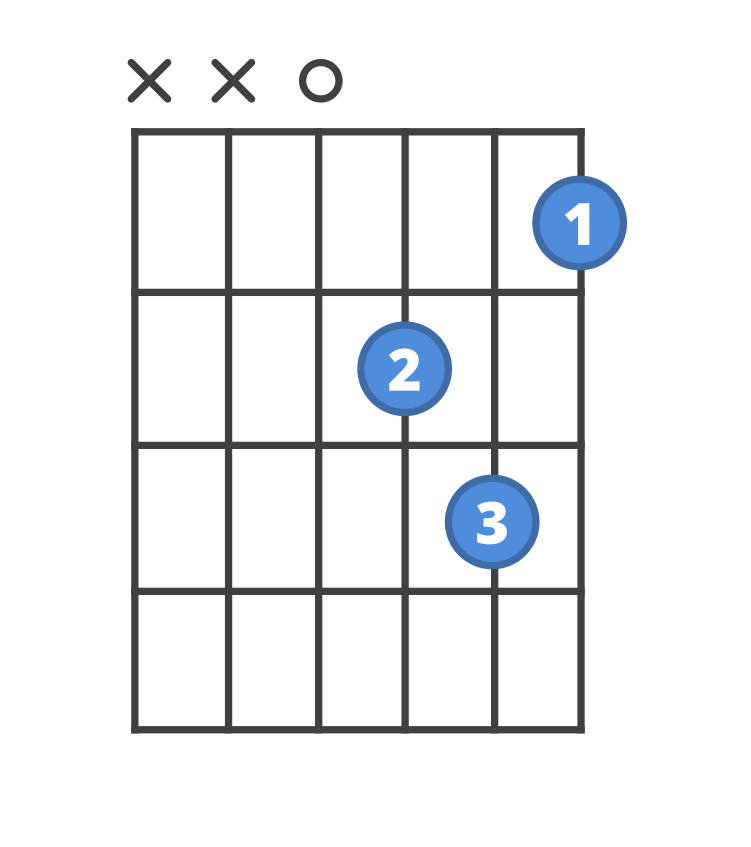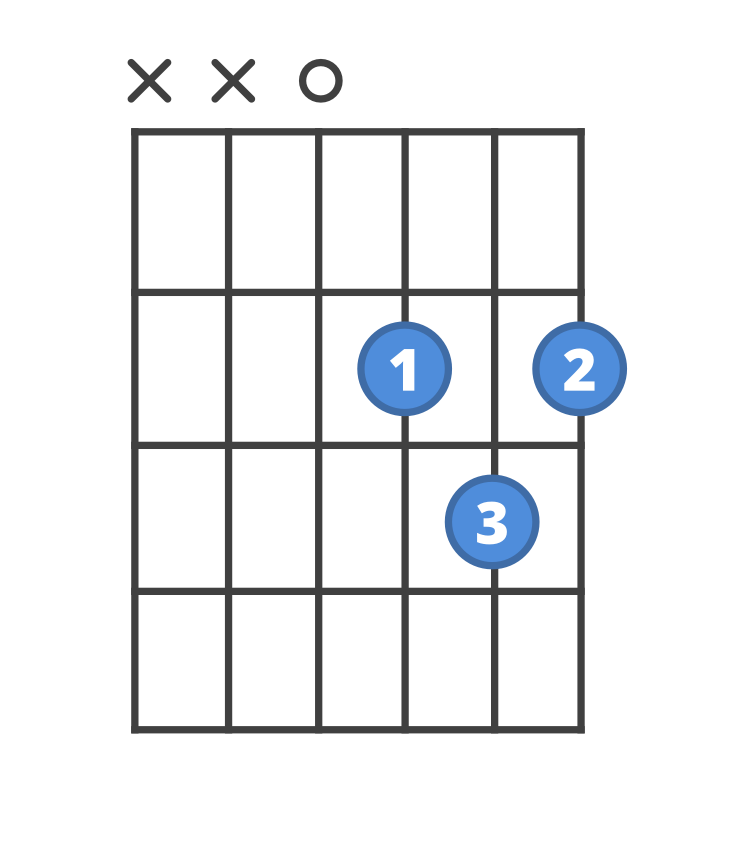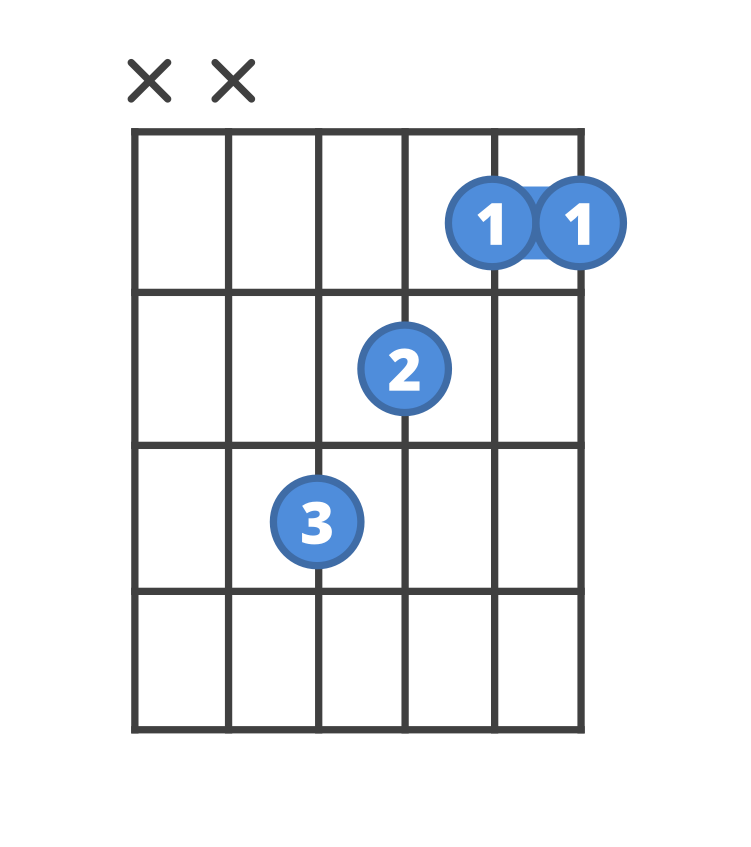
On this page, you’ll learn the Dm guitar chord, plus an easy technique to remember the D minor chord based on another shape you already know.
One way to remember the D m chord shape is to compare it to the D major chord you probably already know.
They both use three fingers, and both play only the highest four strings. But Dm changes the position of one finger:


D major is on the left, D minor is on the right.
As you can see, the D minor chord moves the finger on the first string down by a half step.
This changes the major third to a minor third, and gives us the three notes—D, F and A—that make up the chord.
Remember to only play the highest four strings.
Just because your guitar has six strings, you don’t have to play them all the time. A piano has 88 keys—how many do you see played at once?
Arch your fingers
There’s a little more stretching required for this chord, so make sure to arch your fingers, especially your second finger, so that the end of your second finger doesn’t touch the first string and make it buzz.
Practice with an on-off drill.
A great way to memorize shapes is to use an On Off Drill. (See a video on our page for how to play the C chord)
Taking your fingers off and on again in this way will help your brain memorize the shape, while the four beats give you time to place your fingers.
When you’re ready, try the same technique, but switch back and forth between Dm and another chord, like the F chord.


If you haven’t checked out our guide with the easiest way to play the F chord, you really should—Dm is often played together with F:
And, while you’re at it, make sure you’ve got your C and Bb chords down—those are played with Dm all the time: